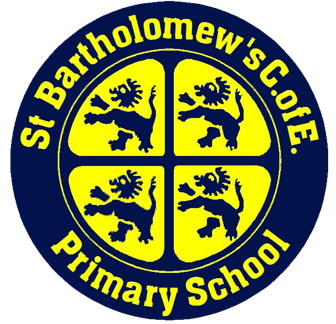Maths
*Please note, this page is currently being updated.
Subject Vision
Mathematics is at the core of the curriculum on offer at St Bart’s and, each year, we strive to create the next generation of mathematicians. The basic skills of maths are fundamental, and this is instilled in our pupils from a young age. Through constant revisiting and relearning of key concepts, our pupils practise key skills on a daily basis so that they are fluent in mathematical concepts. Pupils who grasp concepts rapidly are challenged through the offering of rich, and sophisticated problems before any acceleration into new content. This enables our pupils to adapt their mathematical thinking to different contexts, through the exploration of reasoning and problem-solving. To help further promote the subject and instil a love of learning for maths, we provide practical and computer-based activities to all pupils through Times Table Rockstars, Numbots and during our annual Maths Week. Our aim is for our pupils to think mathematically, enabling them to work independently, solve problems and reason in different contexts. Thus, by the end of Year 6, we strive to ensure our pupils leave St Bart’s with a detailed and broad understanding of mathematics, fully preparing them for the next stage in their education.
The National Curriculum for mathematics aims to ensure that all pupils:
- become fluent in the fundamentals of mathematics, including through varied and frequent practice with increasingly complex problems over time, so that pupils develop conceptual understanding and the ability to recall and apply knowledge rapidly and accurately.
- reason mathematically by following a line of enquiry, conjecturing relationships and generalisations, and developing an argument, justification or proof using mathematical language
- can solve problems by applying their mathematics to a variety of routine and non-routine problems with increasing sophistication, including breaking down problems into a series of simpler steps and persevering in seeking solutions.
At St Bart's, we have grouped the curriculum for maths into hierarchical documents per year group that are linked to the end of year expectations. The rationale allows the children to learn key objectives in greater depth, at an appropriate pace. We have also created intermediate steps between end of year objectives, so that the children can see success as they progress through each year of study. Further exploration leads to deeper learning as the children master these objectives in more varied, and challenging contexts. This means that they are then truly ready for the next stage of their mathematical journey, and academic year.
White Rose Maths
At St Bart’s, we utilise the White Rose Mathematics scheme of learning across the school with a mastery approach, which is supplemented by additional resources. This ensures there is clear progression and the pupils’ mathematical learning is built upon year-on-year. Instilling a mastery skillset in our pupils is a journey and long-term goal. This is achieved through exploration, clarification, practise, and application over a period of time. During each clear stage of learning, pupils should be able to demonstrate a deep, conceptual understanding of the topic and build on this throughout the unit of learning. This is not a case of simply memorising key facts and mathematical procedures (which tends to lead to a superficial understanding that can easily be forgotten) but instead, pupils should be able to select which mathematical approach is most effective to use for a specific calculation, or word problem.
CPA Approach
In following a mastery approach to learning, the presence and usage of concrete manipulatives in each classroom is fundamental when adopting a Concrete-Pictorial-Abstract (CPA) approach. These act as a key resource in developing a rich, deep understanding of mathematics for pupils in Early Years, Key Stage 1, and Key Stage 2.
- Concrete – pupils should have the opportunity to use concrete objects and manipulatives to help them understand and explain what they are doing.
- Pictorial – pupils should then build on this concrete approach by using pictorial representations. These representations can then be used to reason and solve problems.
- Abstract – with the foundations firmly laid, pupils should be able to move to an abstract approach using numbers and key concepts with confidence.
Calculation Policy
At St Bart's, we have an agreed set of methods that we teach for calculations throughout the school. Our 4-part visual calculation policy clearly shows what we model in lessons and what we would expect to see in pupils' books. Whilst acknowledging that there are alternate methods, we expect the children to learn the most efficient "standard" method which can be reinforced at home.
